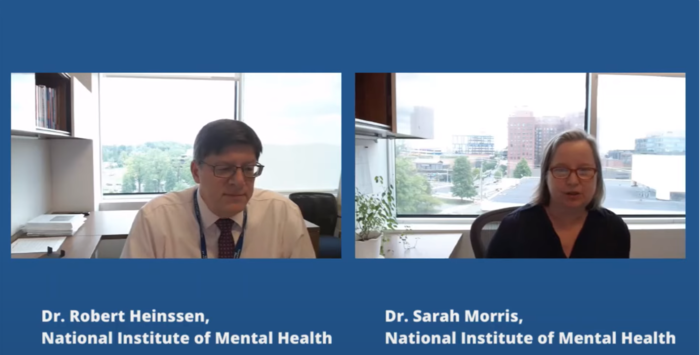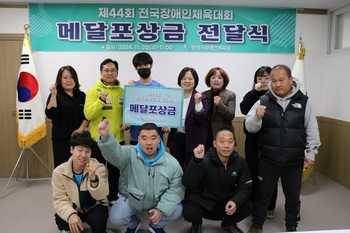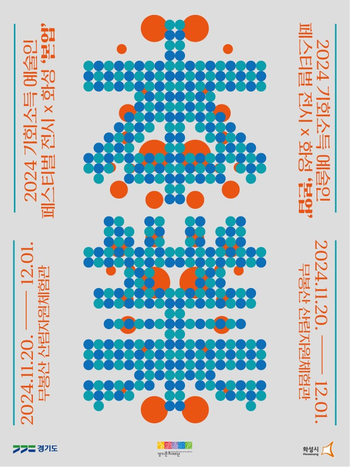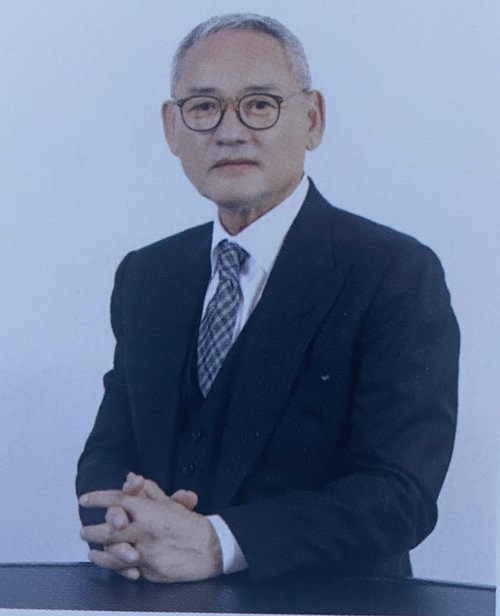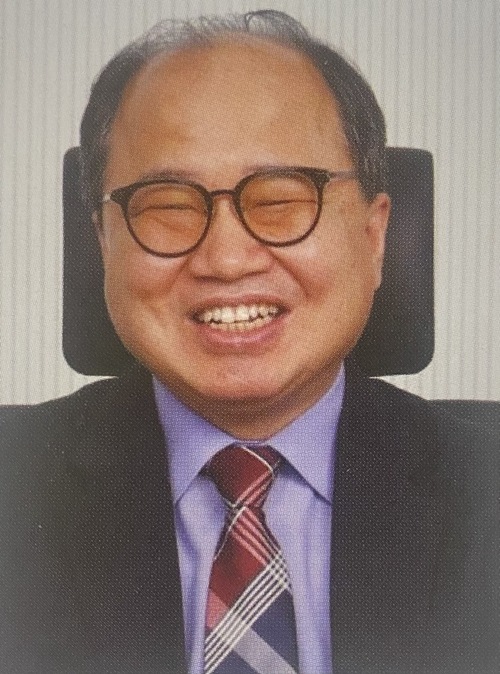미 국립정신건강연구소 ( NIMH)
성적 증명서
(서울 = 장애인인식개선신문) = 로버트 하인센 : 5월은 전국 정신 건강 인식의 달입니다. 오늘 토론에서는 정신분열증을 이해하는 데 중점을 두고 있습니다. 저는 국립 정신 건강 연구소, 줄여서 NIMH의 의료 연구 학습 수석 고문인 Dr. Robert Heinssen입니다.
NIMH에서 저는 정신병의 초기 위험 상태, 첫 번째 정신병 발병 및 실제 환경에서 증거 기반 서비스의 신속한 구현에 초점을 맞춘 주요 이니셔티브에 참여했습니다. 이제 공동 진행자에게 넘겨서 자신을 소개하겠습니다. SARAH E. MORRIS : Heinssen 박사님, 감사합니다. 기술적인 문제를 해결하기 위해 작업을 시작하는 동안 기다려주신 모든 분들께도 감사드립니다. 저는 NIMH의 성인 정신병리학 및 심리사회적 개입 연구 부서 책임자인 Sarah Morris 박사입니다. 우리 부서에서는 감정, 인지, 동기와 같은 뇌 과정이 성인의 정신 질환에 어떻게 영향을 미치는지 조사하는 연구를 지원합니다. 정신분열증은 심각한 건강, 사회적, 경제적 영향을 미칠 수 있는 심각한 정신 질환입니다. 그리고 이는 전 세계적으로 장애를 일으키는 15대 주요 원인 중 하나입니다. 다음 30분 동안 Heinssen 박사와 저는 정신분열증의 징후와 증상, 위험 요인, 치료법, 정신분열증 분야에서 NIMH가 지원하는 최신 연구에 대한 토론을 이끌 것입니다. 지난 10분 정도 여러분의 질문에 답변할 예정이므로 아래 라이브 스트림 게시물에 댓글로 입력해 주세요. 토론이 끝나기 전에 최대한 많은 답변을 드릴 수 있도록 최선을 다하겠습니다. . 오늘 논의 중에는 구체적인 의학적 조언이나 추천을 제공할 수 없다는 점을 기억하는 것이 중요합니다. 다음을 권장합니다. 제공자를 찾는 데 도움이 필요하면 nimh.nih.gov/findhelp를 방문하십시오 . 그리고 우리 팀은 해당 링크를 아래 채팅에 추가할 것입니다. 귀하 또는 귀하가 아는 사람이 위기에 처해 있는 경우 9-8-8 자살 및 위기 생명선 9-8-8에 전화하거나 문자를 보내주세요. 988lifeline.org를 방문하세요 . 더 많은 도움과 정보를 원하시면 생명선은 귀하와 귀하가 사랑하는 사람을 위한 예방 및 위기 자원과 미국 전문가를 위한 모범 사례를 위해 조난에 처한 사람들에게 연중무휴 무료 및 비밀 지원을 제공합니다.
로버트 하인센 : 알겠습니다. 우리의 토론을 시작합시다. 정신분열증의 주요 특징 중 일부를 검토하는 것부터 시작하겠습니다. 따라서 정신분열증은 사람이 생각하고 느끼고 행동하는 방식에 영향을 미치는 심각한 정신 질환입니다.
정신분열증이 있는 사람은 현실과의 접촉을 잃은 것처럼 보일 수 있으며, 이는 자신과 가족, 친구에게 괴로움이 될 수 있습니다. 증상으로 인해 학교에 가거나 직장에 가거나 친구와 시간을 보내는 등 일상적인 활동에 참여하는 것이 어려울 수 있습니다.
정신분열증은 어린이에게서는 드물며, 대부분의 정신분열증 환자는 정신병이 처음 발생한 후인 16~30세 사이에 진단됩니다. 그러나 연구에 따르면 사고, 기분, 사회적 기능의 점진적인 변화는 정신병이 처음 발생하기 몇 주 또는 몇 달 전에 나타나는 경우가 많습니다.
정신분열증의 증상이 나타날 때마다 이를 인지하고 가능한 한 빨리 도움을 구하는 것이 중요합니다. 치료에 대해서는 잠시 후에 이야기하겠지만 처음에는 정신 건강 치료가 효과가 있다는 점을 강조하고 싶습니다. 좋은 소식은 정신분열증 환자가 적절한 치료를 받으면 자신의 삶을 관리하고 어려움을 극복하며 생산적이고 의미 있는 삶을 영위할 수 있다는 것입니다.
그럼 정신분열증에서 흔히 나타나는 세 가지 유형의 증상에 대해 잠시 살펴보겠습니다. 정신병적 증상은 사람이 세상을 생각하고, 행동하고, 경험하는 방식의 변화를 말합니다. 이러한 증상에는 목소리가 들리거나 다른 사람이 보지 못하는 것을 보는 등의 환각이 포함되는 경우가 많습니다. 그리고 편집증적인 생각을 포함한 망상적인 신념.
로버트 하인센: 정신병적 증상이 있는 사람들은 다른 사람들과 공유하는 현실감을 상실하고 왜곡된 방식으로 세상을 경험할 수 있습니다. 음성 증상은 일상 활동에 대한 흥미나 즐거움의 상실, 사회 생활의 위축을 의미합니다.
부정적인 증상을 경험하는 사람들은 때때로 감정을 표현하는 데 어려움을 겪거나 동기 부여 또는 목적 감각의 상실을 경험합니다. 당연히 부정적인 증상은 기능의 여러 영역에서 어려움을 초래할 수 있습니다. 마지막으로 인지 증상은 주의력, 집중력, 기억력의 문제를 말합니다.
이러한 증상으로 인해 대화를 따르거나, 약속을 기억하거나, 새로운 것을 배우는 것이 어려워질 수 있습니다. 정신분열증 증상에 대해 자세히 알아보려면 NIMH 웹페이지 nimh.nih.gov/schizophrenia 를 방문하세요 . 우리 팀은 더 많은 정보를 원하고 정신분열증의 핵심 특징에 대해 더 알고 싶어하는 시청자를 위해 이 링크를 Facebook 댓글에 추가할 것입니다. 사라? 사라 E. 모리스 : 네. 위험 요인에 대해 잠시 이야기해 보겠습니다. 유전적 요인을 포함하여 여러 요인이 정신분열증 발병 가능성에 기여할 수 있습니다. 연구에 따르면 다양한 유전자가 정신분열증 발병 가능성을 높일 수 있지만 단일 유전자가 그 자체로 장애를 일으키는 것은 아닙니다.
NIMH가 부분적으로 자금을 지원한 최근 연구 에서 연구자들은 뇌에서 정신분열증의 유전적 지형을 지도화하는 것을 목표로 했습니다. 이 연구는 리버 뇌 발달 연구소(Lieber Institute for Brain Development)와 존스 홉킨스 의과대학(Johns Hopkins University School of Medicine)의 연구원들이 주도했습니다. 그들의 분석에서는 정신분열증 환자의 뇌의 특정 영역에서 2,700개의 유전자 발현이 변경된 것으로 나타났습니다. 이는 다른 뇌 영역에 초점을 맞춘 이전 연구에서 발현이 변경된 것으로 발견된 유전자 수보다 몇 배 더 많은 것입니다. 여기에는 이전 연구에서 확인된 유전자와 처음으로 정신분열증과 관련된 새로운 유전자가 모두 포함되었습니다. 다른 위험 요소는 환경과 관련이 있습니다.
연구에 따르면 유전적 요인과 개인의 환경 및 삶의 경험 측면이 결합되어 정신분열증 발병에 영향을 줄 수도 있다고 합니다. 이러한 환경 요인에는 빈곤, 스트레스가 많거나 위험한 환경에서의 생활, 출생 전 바이러스 또는 영양 문제에 대한 노출 등이 포함될 수 있습니다. 또한 뇌의 구조와 기능도 중요한 역할을 합니다. 연구에 따르면 정신분열증 환자는 특정 뇌 영역의 크기와 뇌 영역 간 연결에 차이가 있을 가능성이 더 높습니다.
이러한 뇌의 차이 중 일부는 출생 전에 나타날 수 있습니다. 이러한 뇌의 차이는 개인이 뇌 스캔이나 MRI를 기반으로 정신분열증을 진단할 수 있을 만큼 구체적이지 않습니다. 그러나 연구자들은 뇌 구조 및 기능이 정신분열증과 어떻게 관련될 수 있는지 더 잘 이해하기 위해 노력하고 있습니다.
ROBERT HEINSSEN: 이제 우리는 치료와 요법에 관심을 돌릴 것입니다. 정신분열증의 증상은 사람마다 다를 수 있습니다. 따라서 현재의 치료법은 사람들이 증상을 관리하고, 일상 기능을 개선하고, 교육 이수, 직업 추구, 만족스러운 관계 유지와 같은 개인 생활 목표를 달성하도록 돕기 위해 개인화되었습니다. 우리는 약물 치료, 심리 치료, 재활 치료, 가족 구성원을 위한 지지적 중재, 정신병의 첫 번째 에피소드를 경험한 사람을 위한 조정 치료에 대해 간략하게 고려할 것입니다.
따라서 우선, 항정신병 약물은 정신병적 증상을 덜 강렬하고 덜 빈번하게 만드는 데 도움이 될 수 있습니다. 이 약들은 대개 알약이나 액체 형태로 매일 복용됩니다. 일부 항정신병 약물은 한 달에 한두 번 주사로 투여됩니다. 자신에게 가장 적합한 항정신병 약물을 찾기 전에 두 가지 이상의 항정신병 약물을 시도해야 할 수도 있다는 것을 아는 것이 중요합니다.
두 번의 항정신병 약물 시험 후에도 증상이 호전되지 않으면 1차 항정신병 약물에 반응하지 않는 정신분열증 증상에 종종 효과가 있는 약인 클로자핀을 처방할 수 있습니다. 사람들은 항정신병 약물에 다양한 방식으로 반응합니다. 모든 부작용을 의료 서비스 제공자에게 보고한 다음 함께 협력하여 각 개인에게 가장 적합한 약물 유형과 복용량을 찾는 것이 중요합니다. 미국 식품의약국(FDA) 웹사이트 에서 경고, 환자 약물 가이드 또는 새로 승인된 약물에 대한 최신 정보를 찾을 수 있습니다 .바로 FDA 홈페이지입니다.
ROBERT HEINSSEN: 심리 및 재활 치료는 사람들이 개인적인 회복 목표를 개발하고, 일상적인 문제에 대한 실질적인 해결책을 찾고, 학교에 다니거나 일하거나 관계를 유지하는 동안 증상을 관리하는 데 도움이 됩니다. 이러한 치료법은 종종 항정신병 약물과 함께 사용됩니다.
정기적인 심리사회적 치료에 참여하는 사람들은 증상이 재발하거나 병원 치료가 필요할 가능성이 적습니다. 심리 치료의 예로는 인지 행동 치료, 행동 기술 훈련, 지원 고용, 인지 교정 중재 등이 있습니다. NIMH 웹페이지 nimh.nih.gov/psychotherapies를 방문하면 심리 치료에 대한 정보를 찾을 수 있습니다 . 우리 팀은 더 많은 정보를 원하고 종합 치료의 이러한 측면에 대해 더 자세히 알고 싶어하는 시청자를 위해 이 링크를 Facebook 댓글에 추가할 것입니다.
가족 교육과 지원은 정신분열증 치료에 매우 중요합니다. 교육 프로그램은 가족과 친구들이 정신분열증의 증상, 이용 가능한 치료 옵션, 질병을 앓고 있는 사랑하는 사람을 돕기 위한 전략에 대해 배우도록 도울 수 있습니다. 이 프로그램은 친구와 가족이 자신의 고통을 관리하고, 대처 기술을 향상시키며, 아픈 친척을 지원하는 능력을 강화하는 데 도움이 될 수 있습니다.
해당 지역의 가족 기반 서비스에 대한 자세한 내용을 보려면 가족 교육 및 지원 그룹 페이지를 방문하세요. 전국정신질환연맹(National Alliance on Mental Illness) 웹사이트에서. ROBERT HEINSSEN: 조정 전문 진료는 회복에 초점을 맞춘 프로그램으로 정신병의 첫 번째 발병과 정신분열증의 초기 단계를 가진 사람들을 위해 개발된 프로그램입니다.
의료 전문가와 전문의는 팀으로 협력하여 약물 치료, 심리 치료, 취업, 교육 지원, 가족 교육 및 지원을 포함하는 조율된 전문 진료를 제공합니다. 일반적인 진료와 비교하여, 조정된 전문 진료는 증상을 줄이고, 개인의 삶의 질을 향상시키며, 직장이나 학교 참여를 높이는 데 더 효과적입니다.
현재 전국적으로 380개 이상의 통합 전문 치료 프로그램이 있어 정신병의 첫 번째 발병에 대한 회복 중심 치료를 제공합니다. 약물 남용 및 정신 건강 서비스국(Substance Abuse and Mental Health Services Administration)은 초기 심각한 정신 질환 치료 찾기를 주최합니다.50개 주 전체, 컬럼비아 특별구, 푸에르토리코 및 여러 지역에서 조정된 전문 진료 프로그램에 대한 정보를 제공하는 웹사이트에 있습니다. 로케이터 링크는 댓글에 공유되어 있습니다. 통합 전문 치료에 대한 정보를 얻는 또 다른 방법은 NIMH가 지원하는 조기 정신병 개입 네트워크 또는 EPINET 웹사이트를 방문하는 것입니다 .
2019년에 NIMH는 초기 정신병에 대한 조정된 전문 치료를 효과적으로 제공하기 위한 관행을 향상시키는 것을 목표로 하는 광범위한 연구 이니셔티브로 EPINET을 시작했습니다. EPINET은 지속적으로 범위를 확장하고 있으며 현재 17개 주에 8개의 지역 허브와 통합 전문 진료를 제공하는 100개 이상의 지역사회 진료소를 보유하고 있습니다. 정신병을 겪고 있는 사람을 돕는 방법을 아는 것은 어려울 수 있습니다. ROBERT HEINSSEN: 하지만 할 수 있는 일이 몇 가지 있습니다. 먼저, 가능한 한 빨리 치료를 받을 수 있도록 돕고, 계속 치료를 받을 수 있도록 격려하십시오. 그들의 믿음이나 환각이 그들에게는 매우 현실적으로 보인다는 것을 기억하십시오. 당신은 존중하고 지지하며 친절할 수 있지만 동시에 위험하거나 부적절한 행동을 용납하지 않습니다.
National Alliance of Mental Illness에서 제공하는 것과 같은 지원 그룹 및 가족 교육 프로그램을 찾아볼 수 있습니다. 그래서 현재 치료를 받고 있는 곳입니다. 그리고 Sarah, 나는 당신이 미래의 가능성에 대해 우리에게 말해줄 것이라고 믿습니다.
사라 E. 모리스 : 네. 그럼 먼저 AMP 정신분열증 프로젝트 에 대해 이야기하겠습니다. . 따라서 중개과학에서는 정신분열증과 같은 정신 질환이 있는 사람들을 위한 중재 방법을 개발하고 개선하기 위해 기초 과학의 발견을 기반으로 하고 있습니다. 지난해에는 정신분열증(약칭: AMP 정신분열증)의 Accelerating Medicines Partnership®(AMP®) 참가자 모집이 시작되었습니다.
이 파트너십은 정신분열증 위험이 높은 사람들의 결과를 개선하려는 목표로 연방 기관과 민간 및 비영리 조직을 통합하는 전례 없는 대규모 노력을 반영합니다. 현재 이 프로그램에는 조정 센터와 전 세계 42개 연구 현장을 갖춘 2개의 연구 네트워크가 포함되어 있습니다. 앞서 언급했듯이 연구 사이트에서는 작년에 첫 번째 참가자 등록을 시작했으며 등록이 진행 중입니다.
올해 5월 2일 현재 32개 현장 476명의 참여자가 동의 절차를 완료했습니다. 해당 참가자 중 322명은 선별검사를 완료했으며 24개월 연구의 기준 단계 또는 1개월부터 6개월까지 진행 중입니다. 2022년 봄에는 연구 참여에 관심이 있는 잠재적인 연구 참가자와 연구자를 위한 포괄적인 정보 허브 역할을 하는 전용 AMP 정신분열증 웹사이트도 출시되었습니다. 다른 연구 연구와 마찬가지로 NIMH 및 전국의 연구자들은 환자 및 건강한 자원 봉사자를 대상으로 많은 임상 연구를 수행합니다. 수년에 걸쳐 임상 시험에서 밝혀진 내용으로 인해 오늘날 우리는 새롭고 더 나은 치료 옵션을 보유하고 있습니다. 임상 시험, 임상 시험의 이점과 위험, 임상 시험 참여가 귀하에게 적합한지 여부에 대해 담당 의료 서비스 제공자와 상담하십시오.
전국의 정신분열병에 대해 더 자세히 알아보거나 연구를 찾으려면 Clinicaltrials.gov를 방문하세요.을 클릭하면 NIH에서 자금을 지원하는 많은 연구와 연구 참여자로서 자원 봉사에 대한 지침을 포함한 임상 시험 목록이 표시됩니다. 메릴랜드 주 베데스다에 있는 NIH 캠퍼스에서 진행되고 있는 정신분열증에 대한 연구에 대해 자세히 알아보려면 nimh.nih.gov/joinastudy를 방문하세요 .
로버트 하인센: 좋습니다. 감사합니다, 모리스 박사님. 이제 귀하의 질문을 받기 시작하기에 좋은 시기라고 생각합니다. 그 중 몇 가지가 나타났으며, 차례로 살펴보겠습니다. 모리스 박사님, 첫 번째 질문에 응답해 주시겠습니까? 그 다음에는 제가 두 번째 질문을 받겠습니다.
사라 E. 모리스 : 네. 첫 번째 질문은 "외상이 정신분열증을 유발합니까?"입니다. 그리고 나는 이 질문과 이 대답을 주의 깊게 고려해 볼 것을 권장합니다. 트라우마와 정신분열증 사이에는 특별한 관계가 없습니다. 우리는 트라우마로 인한 정신 건강 후유증이 다양한 종류의 증상을 포함해 다양한 형태로 나타날 수 있다는 것을 알고 있습니다. 그러나 일부 사람들, 특히 유전적 요인이나 뇌의 차이로 인해 정신병 발병 위험이 높은 사람들의 경우 평생 동안 또는 출생 전의 외상이 정신분열증 발병 위험 증가와 관련이 있습니다. 하지만 물론 트라우마를 경험한 모든 사람이 정신분열증에 걸릴 것이라는 말은 아닙니다. 그러한 관계는 그보다 더 복잡합니다. 로버트 하인센: 좋습니다. 감사합니다. 그래서 우리가 받은 두 번째 질문은 "알약과 주사에 대한 불신이 심한 사람의 약 복용을 돕는 효과적인 방법은 무엇입니까?"였습니다. 따라서 지난 10여 년 동안 개발된 혁신은 정신분열증 환자와 치료 제공자, 특히 정신과 의사 사이의 관계에서 공유 의사 결정이라는 접근 방식을 도입한 것입니다. 공유된 의사 결정에는 개인이 겪고 있는 어려움과 도움이 될 수 있는 치료 옵션의 범위를 이해하는 공동 프로세스가 있습니다. 어떤 개입이 효과가 있을 수 있는지에 대한 실질적인 협력적 대화가 있으며 일반적으로 일정 기간 동안 특정 치료법을 시행하는 방법에 대해 시도할 수 있는 많은 실험에 대한 토론이 있으며 해당 치료법이 개인에게 어떻게 도움이 되는지 확인한 다음 계속할지 여부에 대한 결정을 내립니다. 조정하거나 새로운 것을 시도해보세요. 이 프레임워크에서 사람들은 약물을 자신의 가장 중요한 삶의 목표 중 일부를 달성하는 데 도움이 되는 보조자로 재개념화할 수 있습니다. 그
리고 이러한 대화가 이루어지면 환자가 전반적인 회복 계획에 도움이 되는 전략으로 약물 치료를 시도할 수 있다고 느끼는 수준의 신뢰를 구축하는 것이 종종 매우 도움이 될 수 있습니다.
따라서 공유된 의사 결정은 문헌에 설명되어 있으며 정신분열증에 대한 포괄적인 치료 계획에서 이 접근 방식과 그 위치를 설명하는 많은 출판물과 심지어 YouTube 비디오에서도 언급됩니다. SARAH E. MORRIS : 밥, 제가 바로 질문 4번에 답해드리겠습니다. 로버트 하인센: 물론이죠. SARAH E. MORRIS : 다음 질문은 "가족이 알아차릴 수 있거나 환자가 처음으로 정신병적 사건을 겪기 전에 스스로 경험할 수 있는 초기 징후나 증상이 있습니까?"입니다. 그리고 연구에 따르면 정신병이 발병하기 전에 관찰할 수 있는 여러 가지 행동이나 경험이 확인되었습니다.
정신병을 경험하는 모든 사람이 우리가 전구 증상이라고 부르는 것을 경험하는 것은 아니지만 많은 사람들이 경험합니다. 따라서 이러한 징후와 증상 중 일부에는 수면 장애, 개인의 말이 매우 모호하거나 접선이 될 수 있는 의사소통 장애, 논리 오류 등이 포함됩니다. 그리고 그들은 사물을 듣거나 보거나 특이한 생각을 가질 수 있는 역치 미만 정신병 증상을 경험할 수도 있지만, 망상적 확신, 즉 자신이 경험하고 있는 것이 무엇인지에 대한 확신이 없습니다. 진짜. 따라서 그 정신병적 경험의 강도는 아직 거기에 이르지 않습니다. 그러나 그들은 특이한 청각 경험을 하고, 거기에 없는 것을 보고, 아마도 그러한 경험의 원인이 될 수 있는 것에 대해 특이한 생각을 갖기 시작할 수도 있습니다. 이는 누군가가 정신병적 에피소드로 진행되면서 나타나기 시작할 수 있는 증상 중 일부입니다.
로버트 하인센 : 알겠습니다. 매우 흥미롭고 중요한 질문입니다. "특히 노인의 경우 건강과 행동 치료 간의 치료 조정이 계속 부족합니다. 이러한 단절을 개선하기 위해 어떤 조치를 취하고 있습니까?" 따라서 우리는 일차 진료 환경의 의료 서비스 제공자가 심각한 정신 질환이 있는 사람의 심혈관 질환, 호흡기 질환, 대사 장애에 대한 일부 위험 요소를 평가하는 데 도움이 될 수 있는 전략에 대한 일부 연구에서 먼저 몇 가지 증거를 얻었습니다. 주로 1차 의료 환경에 위치한 정신 건강 연구 네트워크는 이러한 도구를 개발하고 테스트한 결과 1차 의료 제공자가 이를 잘 수용하는 것으로 나타났습니다. 이는 정신분열증 및 기타 정신병적 장애가 있는 사람들의 신체 질환을 더 잘 관리하게 되었으며 현재는 해당 의료 시스템에서 광범위하게 구현되었습니다.
연방 정부 내에서는 행동 건강 관리와 신체 건강 관리 간의 이러한 단절이 심각한 정신 질환을 앓고 있는 사람들에게 실질적인 책임이 된다는 점을 널리 인식하고 있습니다. 따라서 메디케어 및 메디케이드 서비스 센터와 약물 남용 및 정신 건강 서비스 관리국이 후원하는 인증된 지역 사회 행동 건강 클리닉과 같은 새로운 프로그램은 행동 치료 제공자와 일차 진료 제공자 간의 긴밀한 조정을 강조하여 신체 질환에 필요한 실제로 심각한 정신 질환이 있는 사람도 고려 대상에 포함됩니다.
즉, 검사 결과가 양성일 때 정신 건강 상태에 대한 적절한 검사를 받고 적절한 의료 서비스를 받게 되며 시기적절하게 치료를 받게 됩니다. 따라서 이러한 두 가지 치료 양식을 더 잘 통합하는 방법에 대한 연구가 실제 환경에서 구현되고 있는 방법 중 일부이며, 연방 정부가 이러한 통합을 추진하여 치료의 표준이 되도록 추진하고 있다는 증거입니다. 심각한 정신 질환을 앓고 있는 사람들을 위한 것입니다.
SARAH E. MORRIS : 고마워요, 밥. 다음 질문을 받겠습니다. 문제는 "MRI나 뇌 스캔을 받는 것이 유익할 수 있는가?"입니다. 그리고 이러한 종류의 뇌 스캔은 정신분열증 진단을 위한 일반적인 치료 표준이 아닙니다. 정신분열증 환자의 뇌 구조와 기능을 건강한 개인과 비교하는 연구에서 나타나는 뇌의 차이는 개인의 뇌 스캔에서 포착할 만큼 크지 않습니다. 그러나 뇌종양이나 일종의 병변 또는 기타 퇴행성 질환과 같은 정신병적 증상의 다른 가능한 원인을 배제하기 위해 뇌 스캔을 받는 것이 좋은 생각일 수 있으며 의사는 그것이 좋은 생각이라고 결정할 수 있습니다. 신경 장애.
로버트 하인센: 좋습니다. 이전 질문에 이어 한 참가자는 "정신분열증에 정신적 건강 또는 신체적 측면에서 일반적으로 나타나는 동반 질환이 있습니까?"라고 물었습니다. 글쎄요, 정신분열증이 있는 사람들이 경험하는 공통적인 동반질환이 많이 있는 것으로 알려져 있습니다.
정신분열증 환자의 경우 약물 남용과 알코올 오용이 매우 높은 경우가 많습니다. 때때로 이러한 물질을 복용하는 것은 자가 치료의 방법이거나 증상으로 인해 느끼는 고통을 어느 정도 해결하기 위한 대체 방법을 찾는 방법입니다. 그러나 약물을 복용하는 것은 정신분열증 환자에게 좋은 생각이 아니며, 약물을 버리고 보다 건강한 생활 방식을 유지하도록 돕는 것이 치료의 주요 목표입니다. 신체적 질병의 경우 항정신병약물 중 일부는 체중 증가를 유발하는 부작용이 있는데, 이는 생활습관과 식이요법을 통해 관리할 수 있습니다.
그러나 관리되기 전까지는 비만을 유발할 수 있으며, 이는 심혈관 위험 요인인 심장 질환과 관련된 어려움을 초래할 수 있습니다. 정신분열증을 앓고 있는 수많은 사람들이 담배와 담배 제품을 과도하게 사용한다는 사실로 인해 폐암을 비롯한 호흡기 질환에 걸릴 위험이 더 높아집니다. 그러니까 이 모든 것들이 치료의 대상이 되는 거죠. 로버트 하인센: 항정신병 약물을 주의 깊게 모니터링하고 이를 조정하며, 제가 이미 언급한 식이 요법, 운동 또는 체중 증가 문제를 해결하는 방법, 행동 치료와 신체 건강 관리의 통합에 도움이 되는 개입을 추가하는 것은 이러한 동반질환을 해결합니다.
그리고 제가 언급한 인증된 지역사회 행동 건강 클리닉의 경우 이러한 프로그램의 본질적인 특징 중 하나는 약물 남용 및 심각한 정신 질환을 앓고 있는 사람들에게 통합 치료를 제공한다는 것입니다. 따라서 이러한 프로그램은 개인의 정신과적 어려움과 약물 남용 문제의 두 가지 측면을 모두 다룰 수 있는 치료 팀을 찾는 데 훌륭한 자원입니다.
전국적으로 500개 이상의 인증된 지역사회 행동 건강 클리닉이 있습니다. 그리고 구글에 검색하시면 구글이 인증한 지역사회 행동건강클리닉을 찾으실 수 있습니다. 귀하의 지역에서 가장 가까운 곳과 연락하는 방법에 대한 충분한 지침과 지침을 찾을 수 있습니다.
SARAH E. MORRIS : 훌륭해요. 고마워요, 밥. 다음 질문은 "정신분열증은 모든 연령대에서 발생할 수 있습니까?"입니다. 그리고 정신분열증이 발생하는 연령별 분포를 살펴보면, 청소년기 말기와 성인기 초기에 가장 흔하게 발병합니다. 여성의 패턴은 나이가 들수록 약간 바뀌었지만, 정신분열증이 어린 시절에 발병할 가능성이 있습니다. 그러나 그것은 매우 드뭅니다.
노인의 경우 정신분열증이 노년기에 발병할 수도 있습니다. 그러나 그 나이에는 정신병적 증상에 대한 다른 가능한 요인과 원인을 배제하는 것이 중요합니다. 따라서 일반적으로 초기 성인기, 후기 청소년기, 그러나 그렇습니다. 나이가 많을 수도 있고 더 젊을 수도 있습니다.
그리고 내 생각에 우리는 오늘 시간의 마지막에 와 있는 것 같다. 오늘 이 중요한 토론에 참석해 주신 모든 분들께 진심으로 감사드립니다. 정보가 도움이 되었기를 바랍니다. 도움이 필요하시면 연락주세요. 귀하 또는 귀하가 아는 사람이 위기에 처해 있는 경우 9-8-8 자살 및 위기 생명선 9-8-8에 전화하거나 문자를 보내주세요. 988lifeline.org를 방문하세요 . 더 많은 도움과 정보를 원하시면 도움을 찾기 시작하기에 가장 좋은 곳은 nimh.nih.gov/findhelp 입니다 . 정신분열증에 대한 더 많은 정보를 원하시면 nimh.nih.gov/schizophrenia를 방문하세요 . ROBERT HEINSSEN : 오늘 관심을 갖고 시간을 내주신 모든 분들께 진심으로 감사드리며, Morris 박사님께도 감사드립니다. SARAH E. MORRIS : 감사합니다, 하인센 박사님. =========== TranscriptROBERT HEINSSEN: May is National Mental Health Awareness Month. For our discussion today, we're focusing on understanding schizophrenia. I am Dr. Robert Heinssen, senior adviser for learning healthcare research at the National Institute of Mental health, or NIMH for short. At NIMH, I've worked on key initiatives focused on early-risk states for psychosis, first-episode psychosis, and the rapid implementation of evidence-based services in real-world settings. I'll now turn it over to my co-host to introduce herself. SARAH E. MORRIS: Thank you, Dr. Heinssen, and thank you to everyone for your patience as we were working at our technical difficulties in getting started. I'm Dr. Sarah Morris, chief of the adult psychopathology and psychosocial interventions research branch here at NIMH. My branch supports research that examines how brain processes like emotion, cognition, and motivation contribute to mental illnesses in adults. Schizophrenia is a serious mental illness that can have significant health, social, and economic impacts. And it is one of the top 15 leading causes of disability worldwide. During the next half hour together, Dr. Heinssen and I will lead a discussion on the signs and symptoms of schizophrenia, risk factors, treatments, and the latest NIMH-supported research in the area of schizophrenia. We'll take the last 10 minutes or so to take some of your questions, so please enter them as comments under the live stream post below, and we'll do our best to answer as many as we can before the end of our discussion. It's important to note that during our discussion today, we can't provide specific medical advice or referrals. We do encourage you to-- if you need help finding a provider, please visit nimh.nih.gov/findhelp. And our team will drop that link into the chat below. If you or someone you know is in crisis, please call or text the 9-8-8 suicide and crisis lifeline at 9-8-8. Visit 988lifeline.org for more help and information. The lifeline provides 24/7 free and confidential support for people in distress for prevention and crisis resources for you and your loved ones and best practices for professionals in the United States. ROBERT HEINSSEN: Okay. Let's get into our discussion. We'll start by reviewing some of the key characteristics of schizophrenia. So schizophrenia is a serious mental illness that affects how a person thinks, feels, and behaves. People with schizophrenia may seem like they have lost touch with reality, which can be distressing for them and for their family and friends. The symptoms can make it difficult to participate in usual everyday activities, like going to school or work or spending time with friends. Schizophrenia is rare in children, and most people with schizophrenia are usually diagnosed between the ages of 16 and 30, after the first episode of psychosis. However, research shows that gradual changes in thinking, mood, and social functioning often appear weeks or months before the first episode of psychosis. Whenever the symptoms of schizophrenia do occur, it is important to recognize them and seek help as early as possible. We'll talk about treatment in a bit, but I want to emphasize at the start that mental health treatments work. The good news is that with appropriate treatment, people with schizophrenia can manage their lives, overcome challenges, and lead productive and meaningful lives. So let's spend a moment considering the three types of symptoms that commonly occur in schizophrenia. Psychotic symptoms refer to changes in the way that a person thinks, acts, and experiences the world. These symptoms often include hallucinations, such as hearing voices or seeing things that others don't. And delusional beliefs, including paranoid ideas. ROBERT HEINSSEN: People with psychotic symptoms may lose a shared sense of reality with others and experience the world in a distorted way. Negative symptoms refer to a loss of interest or enjoyment in daily activities or withdrawal from social life. People experiencing negative symptoms sometimes have difficulty showing emotions, or they experience a loss of motivation or sense of purpose. Understandably, negative symptoms can create difficulties in many areas of functioning. And finally, cognitive symptoms refer to problems in attention, concentration, and memory. These symptoms can make it hard for a person to follow a conversation, remember appointments, or learn new things. To learn more about the symptoms of schizophrenia, please visit the NIMH web page, nimh.nih.gov/schizophrenia. Our team will drop this link into the Facebook comments for viewers who desire more information and wish to learn more about the core characteristics of schizophrenia. Sarah? SARAH E. MORRIS: Yeah. Let's talk for a minute about risk factors. Several factors may contribute to a person's chances of developing schizophrenia, including genetic factors, studies suggest that many different genes may increase a person's chances of developing schizophrenia, but that no single gene causes the disorder by itself. In a recent study, funded in part by NIMH, researchers aimed to map the genetic landscape of schizophrenia in the brain. The study was led by researchers at the Lieber Institute for Brain Development and the Johns Hopkins University School of Medicine. Their analyses showed altered expression in 2,700 genes in a specified region of the brain of people with schizophrenia, several times more than the number of genes found with altered expression in previous studies focusing on other brain regions. These included both genes identified in prior studies and new genes linked to schizophrenia for the first time. Other risk factors are related to the environment. Research suggests that a combination of genetic factors and aspects of a person's environment and life experience may also play a role in the development of schizophrenia. These environmental factors may include living in poverty, stressful or dangerous surroundings, and exposure to viruses or nutritional problems before birth. In addition, brain structure and function plays a role. Research shows that people with schizophrenia may be more likely to have differences in the size of certain brain areas and in connections between brain areas. Some of these brain differences may develop before birth. These brain differences are not specific enough that an individual can be diagnosed with schizophrenia on the basis of a brain scan or an MRI, but researchers are working to better understand how brain structure and function may relate to schizophrenia. ROBERT HEINSSEN: So now we'll turn our attention to treatment and therapies. Schizophrenia symptoms can differ from person to person. So current treatments are personalized to help people manage their symptoms, improve day-to-day functioning, and achieve personal life goals, such as completing an education, pursuing a career, and having fulfilling relationships. We'll briefly consider medications, psychological, and rehabilitation treatments, supportive intervention for family members, and coordinated treatment for persons experiencing a first episode of psychosis. So to start, antipsychotic medications can help make psychotic symptoms less intense and less frequent. These medications are usually taken every day in a pill or liquid form. Some antipsychotic medications are given as injections once or twice a month. It's important to know that a person may need to try more than one antipsychotic medication before finding the one that works best for them. If a person's symptoms do not improve after two antipsychotic medication trials, they may be prescribed clozapine, a medicine that often works for schizophrenia symptoms that do not respond to first-line antipsychotic medications. People respond to antipsychotic medications in different ways. It's important to report any side effects to a healthcare provider and then to work together to find the type and dose of medication that works best for each individual. You can find the latest information on warnings, patient medication guides, or newly approved medications on the U.S. Food and Drug Administration website. That's the FDA website. ROBERT HEINSSEN: Psychological and rehabilitation treatments help people to develop personal recovery goals, find practical solutions to everyday challenges, and manage symptoms while attending school, working, or maintaining their relationships. These treatments are often used together with antipsychotic medication. People who participate in regular psychosocial treatment are less likely to have symptoms reoccur or to require hospital care. Examples of psychological treatment include cognitive behavioral therapy, behavioral skills training, supported employment, and cognitive remediation interventions. You can find information about psychological treatments by visiting the NIMH web page, nimh.nih.gov/psychotherapies. Our team will drop this link into the Facebook comments for viewers who desire more information and wish to learn more about these aspects of comprehensive treatment. Family education and support is very, very important in the treatment of schizophrenia. Educational programs can help family and friends to learn about the symptoms of schizophrenia, the treatment options available, and strategies for helping loved ones with the illness. These programs can help friends and family members manage their own distress, boost their coping skills, and strengthen their ability to provide support to their ill relative. For more information about family-based services in your area, you can visit the family education and support groups page on the National Alliance on Mental Illness website. ROBERT HEINSSEN: Coordinated specialty care is a program that was developed-- is a recovery-focused program, developed for people with first-episode psychosis and early stage of schizophrenia. Health professionals and specialists work together as a team to provide coordinated specialty care, which includes medication, psychotherapy, employment, and education support, and family education and support. Compared with typical care, coordinated specialty care is more effective at reducing symptoms, improving a person's quality of life, and increasing involvement in work or school. There are now over 380 coordinated specialty care programs nationwide that offer recovery-oriented treatment for first-episode psychosis. The Substance Abuse and Mental Health Services Administration hosts an early serious mental illness treatment locator on their website that provides information about coordinated specialty care programs in all 50 states, the District of Columbia, Puerto Rico, and several territories. The link to the locator is shared in the comments. Another way to obtain information about coordinated specialty care is to visit the website of the NIMH-supported early psychosis intervention network or EPINET. In 2019, NIMH launched EPINET as a broad research initiative that aims to enhance practices for the effective delivery of coordinated specialty care for early psychosis. EPINET continues to expand its reach and now has 8 regional hubs in 17 states with more than 100 community clinics that provide coordinated specialty care. It can be difficult to know how to help someone who's experiencing psychosis. ROBERT HEINSSEN: But here are a few things that you can do. First, help them get treatment as early as possible and then encourage them to stay in treatment. Remember that their beliefs or their hallucinations seem very, very real to them. You can be respectful, supportive, and kind but at the same time, without tolerating dangerous or inappropriate behavior. You can look for support groups and family education programs, such as those offered by the National Alliance of Mental Illness. So that's where we are currently with treatment. And, Sarah, I believe you're going to tell us about some future possibilities. Sarah E. MORRIS: Yeah. So I'm going to talk first about the AMP Schizophrenia project . So in translational science, we're building on findings from basic science to develop and improve interventions for people with mental illnesses like schizophrenia. Last year marked the launch of participant recruitment for the Accelerating Medicines Partnership® (AMP®) in Schizophrenia or AMP Schizophrenia for short. This partnership reflects an unprecedented large-scale effort uniting federal agencies and private and nonprofit organizations with the goal of improving outcomes for people at elevated risk for schizophrenia. Currently, this program includes a coordination center and two research networks with 42 study sites across the globe. As I mentioned, study sites began enrolling the first wave of participants last year, and enrollment is ongoing. As of May 2nd, of this year, 476 participants across 32 sites have completed the consent process. Of those participants, 322 have also completed screening and are in the baseline phase or months 1 through 6 of this 24-month study. In the spring of 2022, we also saw the launch of a dedicated AMP Schizophrenia website, which serves as a comprehensive information hub for potential study participants and researchers, interested in joining the study. As far as other research studies, researchers at NIMH and around the country conduct many clinical research studies with patients and healthy volunteers. We have new and better treatment options today because of what those clinical trials uncovered over the years. Please talk to your healthcare provider about clinical trials, their benefits and risks, and whether participating in one is right for you. To learn more or find studies on schizophrenia across the country, visit clinicaltrials.gov , and you'll see a list of clinical trials, including many studies funded by NIH and instructions to volunteering as a study participant. To learn more about studies being conducted on schizophrenia on the NIH campus in Bethesda, Maryland, visit nimh.nih.gov/joinastudy. ROBERT HEINSSEN: Okay. Thank you, Dr. Morris. So now I think it's a good time to start taking your questions. A few of them have appeared, and we'll take them in turn. Dr. Morris, would you care to take the first question, and then I'll take number two? SARAH E. MORRIS: Yes. So the first question is, "Does trauma cause schizophrenia?" And I would encourage a careful consideration of this question and this answer. There's not a specific relationship between trauma and schizophrenia. We know that the mental health sequelae of trauma can take many forms, including many different kinds of symptoms. But in some people, especially those who may be at elevated risk of psychosis due to genetic factors or brain differences, trauma during the lifetime or prenatally is associated with elevated risk of schizophrenia. But of course, that's not to say that everybody who experiences a trauma is going to go on to develop schizophrenia. Those relationships are simply more complicated than that. ROBERT HEINSSEN: Okay. Thank you. So the second question we received, "What are some effective methods for assisting in the taking of the medications for a person who has severe distrust of pills and injections?" So an innovation that has been developed over the last decade or so is the introduction of an approach called shared decision-making in the relationship between a person with schizophrenia and their care provider, and specifically their psychiatrist. And in shared decision-making, there's a collaborative process of understanding the difficulties that a person is experiencing and the range of treatment options that are available to help them. There's a real collaborative conversation about what interventions may work and, usually, discussions about many experiments that can be tried about implementing a particular treatment over a period of time, seeing how that treatment helps the individual, and then making decisions about whether to continue, adjust, or try something new. In this framework, very often people can reconceptualize medication as an aide that will help them to achieve some of their most important life goals. And if this conversation occurs, it often can be very helpful to establish a level of trust where the person feels that they can try medications as a strategy to help in their overall plan for recovery. So shared decision-making has been described in the literature and is mentioned in many publications and even YouTube videos that describe this approach and its place in a comprehensive treatment plan for schizophrenia. SARAH E. MORRIS: Bob, I can jump in and answer question number four. ROBERT HEINSSEN: Sure. SARAH E. MORRIS: So this next question is, "Are there any early signs or symptoms that family members may notice or the patient may experience themselves before having their first psychotic event?" And research has identified several different behaviors or experiences that can be observed prior to the onset of psychosis. Now, not everybody who experiences psychosis experiences what we call prodromal symptoms, but many do. So some of those signs and symptoms include disruptions in sleep, disruptions in communication where an individual's speech might become very vague or tangential, lapses in logic, for example. And they may experience what we would call sub-threshold psychotic symptoms where they may hear things or see things or have unusual ideas, but they don't have the, what we call, delusional conviction, the certainty that what they're experiencing is real. So the intensity of that psychotic experience isn't there yet, but they may be having unusual auditory experiences, seeing things that aren't there, and maybe starting to have unusual ideas about what might be causing those experiences. So those are some of the symptoms that may start to appear as someone is progressing toward a psychotic episode. ROBERT HEINSSEN: Okay. A very interesting and important question, "There continues to be a lack of coordination of care between health and behavioral treatment, especially for people who are older adults. What is being done to improve this disconnection?" So we have some evidence first from some research about strategies that can help care providers in primary-care settings to be more aware of assessing some of the risk factors for cardiovascular disease, respiratory illness, metabolic difficulties in persons with serious mental illness. The mental health research network, which is located primarily in primary care settings developed and tested such a tool and found that it was well-accepted by primary care providers. It led to better management of physical illness among people with schizophrenia and other psychotic disorders and now has been broadly implemented in that healthcare system. Within the federal government, it's widely recognized that this disconnect between behavioral healthcare and physical healthcare is a real liability for people with serious mental illness. So new programs, such as the certified community behavioral health clinics that are sponsored by the Center for Medicare and Medicaid Services and the Substance Abuse and Mental Health Services Administration emphasize close coordination between behavioral treatment providers and primary care providers so that the physical illness needs of people with serious mental illness are in fact taken into account, meaning that they receive the appropriate screening for mental health conditions when the screens are positive, they're referred to the appropriate medical care, and that they achieve that care in a timely fashion. So these are some of the ways in which research on ways to better integrate these two modalities of care are being implemented in real-world settings and evidence that the federal government is taking steps to push that integration along so that it becomes the standard of care for people with serious mental illness. SARAH E. MORRIS: Thanks, Bob. I can take the next question. The question is, "Can it be beneficial to have an MRI or a brain scan?" And those kinds of brain scans are not the typical standard of care for the purpose of diagnosing schizophrenia. The brain differences that appear in studies comparing brain structure and function in schizophrenia in comparison to healthy individuals are not-- those differences aren't large enough to pick up on any one individual brain scan. However, it may be a good idea, and a doctor may decide that it's a good idea, to have a brain scan in order to rule out other possible causes of psychotic symptoms, such as a brain tumor or some kind of lesion or other degenerative neurological disorder. ROBERT HEINSSEN: Okay. Following the earlier question, a participant asked, "Does schizophrenia have any comorbidities that you typically see, mental-health- or physical-wise?" Well, it's known that there are a number of common comorbidities that people with schizophrenia experience. Substance use and alcohol misuse are often very high among people with schizophrenia. Sometimes taking those substances is a way of self-medicating or finding trying to find an alternate way of achieving some resolution of the distress that they feel from their symptoms. But taking substances is not a good idea for people with schizophrenia, and helping them to leave those behind for a more healthy lifestyle is a principal goal of treatment. On the physical illness side, antipsychotic medications, some of them have a side effect of causing weight gain, which can be managed through lifestyle and diet. But until it's managed, it can create obesity, which can lead to difficulties related to cardiovascular risk factors, heart disease. The fact that many, many people with schizophrenia have excessive use of tobacco and tobacco products makes them at higher risk for respiratory illnesses, including lung cancer. So all of these things are a target for treatment. ROBERT HEINSSEN: So careful monitoring of antipsychotic medications and adjusting them and adding interventions that help with diet, exercise, or a way of addressing the weight-gain problems, integration of behavioral care and physical healthcare, that I already mentioned, is another way of addressing these comorbidities. And in the certified community behavioral health clinics that I mentioned, one of the essential characteristics of those programs is offering integrated treatment for people who have substance use and serious mental illness conditions. So those programs are excellent resources for finding treatment teams that are equipped to dealing with both aspects of a person's psychiatric and substance abuse difficulties. There are over 500 certified community behavioral health clinics across the nation. And if you google them, you'll be able to find a Google-certified community behavioral health clinics. You'll be able to find ample instructions and guidance about how to get in contact with one that's closest to your area. SARAH E. MORRIS: Terrific. Thanks, Bob. I can take the next question, which is, "Can schizophrenia happen at all ages?" And if you look at the distribution of ages at which schizophrenia occurs, it most commonly has its onset in late adolescence and early adulthood. The pattern in women shifted slightly older, but it is possible for schizophrenia to have an onset in childhood. However, that is very rare. In older adults, it is also possible for schizophrenia to develop in older adulthood. However, at that age, it's important to rule out other possible contributors and causes to psychotic symptoms. So generally, early adulthood, late adolescence, but yes, it is possible older and younger ages. And I think we are at the end of our time today. So thank you all very much for joining us today for this important discussion. We hope that the information was useful. Please reach out for help if you need it. As a reminder, if you or someone you know is in crisis, please call or text the 9-8-8 suicide and crisis lifeline at 9-8-8. Visit 988lifeline.org for more help and information. A great place to start finding help is nimh.nih.gov/findhelp. For more information about schizophrenia, please visit nimh.nih.gov/schizophrenia. ROBERT HEINSSEN: Thank you all very much for your interest and spending your time with us today, and thank you, Dr. Morris. SARAH E. MORRIS: Thank you, Dr. Heinssen. <저작권자 ⓒ 장애인인식개선신문 무단전재 및 재배포 금지>

댓글
|
많이 본 기사
|


